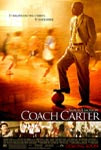MPs urge safe houses for youths who want to break with gangsThe report on young black people and the criminal justice system also warns that boys and young men who lack the involvement of a father in their lives can develop "father hunger" - a trauma that leaves them vulnerable to peer pressure and involvement in gang culture.The MPs also challenge radio and television broadcasters to tackle concerns that rap, grime and hip hop music glamorise violent, criminal lifestyles.
The inquiry by the Commons home affairs select committee comes after three black teenagers were shot and killed in 11 days in south London in February and two black schoolboys were stabbed to death in the space of six days. In London in 2006, 75% of the victims of gun crime and 79% of the suspects were black.
The MPs say the over-representation of young black people at all stages of the criminal justice system poses a "serious crisis" for all sections of the black community. They are particularly concerned at the prediction - confirmed by ministers - that three-quarters of the young black male population will soon be on the DNA database as a result of disproportionate arrest rates and the alarming growth in the numbers in custody
The report says these factors "interact in a 'web of disadvantage' compounded by other trends within black communities, such as lack of father involvement and the lack of positive role models, and the presence of powerful alternative negative role models in media and popular culture".
The MPs' proposals to extend mentoring and to increase funding for prevention, rehabilitation and gang exit programmes were supported by Nacro, the crime reduction charity, but it criticised their opposition to setting targets to produce more equal outcomes for young black people in the criminal justice system, saying discrimination remained.



